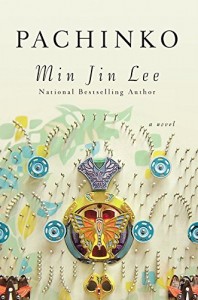 Published by Grand Central Books US/ Apollo Books UK
Published by Grand Central Books US/ Apollo Books UK
7 February/23 February 2017, 496pp
Reviewed by Elsbeth Lindner
The taint of racism survives across generations and through history’s seismic shifts, in Min Jin Lee’s compelling saga of Korean immigrants in twentieth-century Japan. This epic tale of colonial domination and discrimination opens a window on suffering, both past and ongoing, that will perhaps come as a revelation to Western readers.
Lee has done an impressive job of exposing the terrible consequences of Japan’s invasion of Korea in 1910 and the ensuing fall out. Her long,  careful and tender narrative, simple in form, rests on a persuasive foundation of research while funneling information through four generations of a single family, starting with the fortunes of Hoonie, a Korean child born with a cleft palate and a twisted foot.
careful and tender narrative, simple in form, rests on a persuasive foundation of research while funneling information through four generations of a single family, starting with the fortunes of Hoonie, a Korean child born with a cleft palate and a twisted foot.
Hoonie is 27 when Japan annexes Korea, beginning the systematic, implacable oppression of its people, forcing many into penury and others to move to Japan for survival, unaware of the ghettoization they will experience there. Such is the fate of Hoonie’s beloved daughter Sunja whose youthful mistake – to fall under the spell of a charismatic older man, Hansu – will mould the future of his descendants down through the decades.
Sunja becomes pregnant but Hansu cannot marry her – he already has a wife and three daughters. Disgraced herself and about to bring shame and ruin to her hardworking, widowed mother, an indefatigable innkeeper, Sunja is in despair until thrown a lifeline by a Korean pastor, Isak, whose frail health encourages him to save her through marriage, thereby giving his own, perhaps brief existence meaning. And so Sunja weds Isak and the couple moves to Japan, to start a new life in the home of Isak’s brother.
Such fairytale events occur on and off through this long story, but are easily overshadowed by the darker developments in the lives of Sunja, Isak, their family, children and acquaintances. In a culture that sees them as dirty, untrustworthy second-class citizens, and confines their opportunities accordingly, the family works for its survival, both religious and economic. War and tragedies closer to home overtake them. Yet Sunja’s first child, Noa, and a second – fathered by Isak – named Mozasu grow up into thoughtful men with strong work ethics and moral dispositions. For complicated reason, both end up working in the less than honourable pachinko (gambling) business.
Most memorable in its remoter and innocent first chapters, the novel can seem soapy at times, with drama and rescue – and loss – arriving at surprising speed. But Lee writes with a transparency that lends honesty to her characters, notably the women at the novel’s heart. ‘A woman’s life is suffering’ is the oft-quoted refrain of Sunja, her mother and her sister-in-law whose powers of endurance and generosity are tested to their limits. The female characters’ sexuality are also explored with some frankness.
This is a saga with an ambitious reach, and an element of literary depth that pushes the boundaries of its category. Lee’s rural panoramas and teaming townscapes, her plotting, characters, energy and empathy all lift the book beyond the conventional. Its life lessons may be painful, but the reading experience is far from it.
